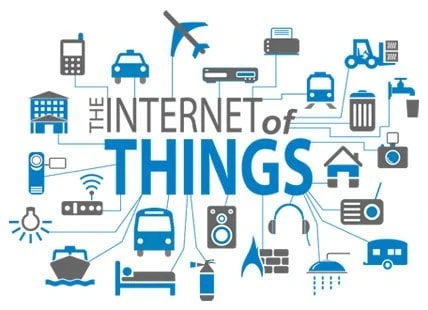SAP and the Internet of Things (IoT) - SAP Leonardo
SAP and the Internet of Things (IoT) - SAP Leonardo.
The promise of the Internet of Things is that when all manner of gadgetry is connected and sending stacks of status and use data into the cloud, information will therefore be more plentiful and granular.

Therefore, it’s only a matter of time before some clever software vendor promises a way to gather all of that swirling cloud information and produce sharper marketing insight, better decision making, greater efficiency, higher productivity, and just plain more good vibes in general. That vendor, of course, is SAP!
First, a word is in order about gadget population and growth trends driving this “internet of things.” These are big numbers, as you can imagine. Eight years ago, according to Gartner, we already had something like 900 million connected things worldwide. By 2020? They estimate 26 billion!
That’s quite a lot of things, with accompanying data. But data without analysis is analogous to a computer without a power cord.
For example, Harry Blunt has written on the SAP blog:
While having 50 billion connected devices is newsworthy, until that level of enhanced connectivity leads to tangible business value, hyper-device connectivity by itself is meaningless.
And Tanja Reickart wrote glowingly:
I have no doubt, that with 50 billion+ devices connected to the internet by 2020, IoT will change our personal lives in the way we, as humans, interact with machines, from smart homes, to smart cars, to smart food and helping our environment with better utilization of natural resource – making the world run better!

So, how to make the world run better and add business value to all those connected things? SAP, by way of their line extensions into Big Data, began promoting a new product line last year called “SAP IoT Solutions.” Given the advantages inherent within HANA technology, their offerings are, as usual, compelling.

Essentially, the SAP IoT Solution started off by offering integration among the three following services:
1. Device Management
2. Message Management
3. Analytics
Assuming successful functional device and message management, it is easy to appreciate that Analytics – gathering all that data and crunching it – is at the real heart of the matter. After all, HANA technology is nothing if not a number of key enhancements in data handling and management. Billions and billions of things leads inexorably to Big Data. And HANA technology has custom enzymes to break Big Data into smaller, more quickly digestible pieces suitable for analysis.
At the start of this year SAP doubled down on the Internet of Things. The entire “SAP IoT Solutions” suite was rebranded as the “SAP Leonardo” portfolio.
Consider, for example, Hans Thalbauer’s recent blog post:
The SAP Leonardo portfolio empowers Live Business by connecting the emerging world of intelligent devices with people and processes to achieve tangible business outcomes.
The solutions which are part of this portfolio, connect things with people and processes to enable companies to innovate their business models, business processes and the way how people work.
This caused leading SAP user and commentator Jelena Perfiljeva to retort:
Not sure if I’m reading a different text than the other commentators or maybe I’m just stupid. But to me this just looks like a load of marketing jargon yet I still have no idea what (who?) that SAP Leonardo actually is and what / how it does.

But I think I have decoded it.
SAP Leonardo is simply the newly named product line to succeed “SAP IoT Solutions.” Call it a suite or portfolio or whatever, it makes no difference. The main concept of Leonardo is to leverage (they use the term “bridge”) the use and analysis of Big Data throughout a company’s units and operation.
“Connected things” used to be novelties like the second floor coke machine. Geeks could log on to the machine via the internet to see if there is any Tab in stock.
No longer.
In our new SAP context, then, a connected “thing” is not only a Product, but can also be a(n):
1. Asset, like manufacturing robots
2. Fleet, like delivery trucks
3. Infrastructure, like energy grids
4. Market, like retailers and wholesalers who hold and sell your products
5. People, in your manufacturing plant or sales offices.

IoT - Fleet Management. Today a truck can have multiple devices connected to the internet.
This goes way beyond your internet connected air conditioner! The idea therefore is to link intelligent devices together with people and processes. Each category of “things” above has a specific “solution” or application specifically tailored to link, collect data, and then present analytics for management in real-time. Call it a suite or call it a portfolio, as SAP does.
Current SAP marketing literature on the Internet of Things is full of references to “contextual information on weather, traffic, social media trends, and demand signals.” But, to be sure, such data was always invaluable to operations managers. SAP Leonardo, through its bridge or integration, is a system designed out of the box to pull it all together for management’s benefit.
SAP have taken it up a notch, by combining with predictive analytics. Seeing around corners is admittedly a most impressive skill. And logically speaking, good analysis takes into account present trends and makes reasoned assumptions about where they are going. This should lead to better results.
If this is for you and your company, kindly note that promotional pricing for SAP Leonardo is currently available. But don’t delay! Act now to take advantage of this offer! SAP is going big into this; they’ve committed €2 billion to their Leonardo Initiative over the next 5 years.
We will be keeping an eye on how SAP Leonardo and the Internet of Things have progressed later this year, so please bookmark Eursap’s Blog page and check back for more soon!